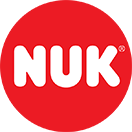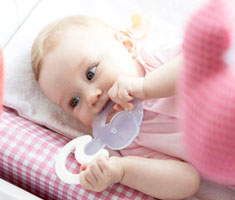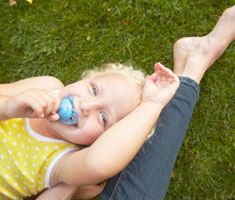![[Translate to South Africa:] small kids learn to eat and drink](/fileadmin/Default/help_and_advice/6-18_months/6_18_learning_to_eat.jpg)
From 10 months, most children are able to sit up, have quite a few teeth and will grab at anything within reach – which obviously includes food. Your baby is no longer an infant and can gradually move from purees to finger foods and other solids. This is the time when you can begin eating as a family. In other words, you can put away your blender: gently mashing up the food or cutting it into small pieces will suffice.
Your child is now ready for a breakfast of bread and milk. Cut the crust off a slice of wholemeal bread, butter it and cut it into soldiers so that your child can pick them up himself. Milk should no longer be in a bottle or breastfed, but in a training cup (spill-proof, if possible).
Pieces of fruit or vegetables served alongside the bread, or as a snack between meals, will provide additional vitamins and are generally very popular with toddlers. Start by giving your child soft fruit and vegetables such as bananas, soft pears or nectarines, or cucumber pieces. You can then move on to vegetables that he can gnaw on, like carrot or kohlrabi sticks.
It is important to note that fruit and vegetable pieces are not only good for your child from a nutritional point of view, but also encourage your child’s mouth muscles to develop and promote the onset of speech. This is another reason for supporting your child’s wish to eat like a grown-up – even if, to start with, not everything ends up in his mouth.

![[Translate to South Africa:] learning to eat and drink](/fileadmin/Default/help_and_advice/6-18_months/experts_nutrition_stage.jpg)



